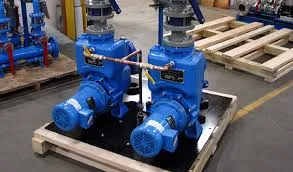Persian
- Afrikaans
- Albanian
- Amharic
- Arabic
- Armenian
- Azerbaijani
- Basque
- Belarusian
- Bengali
- Bosnian
- Bulgarian
- Catalan
- Cebuano
- Corsican
- Croatian
- Czech
- Danish
- Dutch
- English
- Esperanto
- Estonian
- Finnish
- French
- Frisian
- Galician
- Georgian
- German
- Greek
- Gujarati
- Haitian Creole
- hausa
- hawaiian
- Hebrew
- Hindi
- Miao
- Hungarian
- Icelandic
- igbo
- Indonesian
- irish
- Italian
- Japanese
- Javanese
- Kannada
- kazakh
- Khmer
- Rwandese
- Korean
- Kurdish
- Kyrgyz
- Lao
- Latin
- Latvian
- Lithuanian
- Luxembourgish
- Macedonian
- Malgashi
- Malay
- Malayalam
- Maltese
- Maori
- Marathi
- Mongolian
- Myanmar
- Nepali
- Norwegian
- Norwegian
- Occitan
- Pashto
- Persian
- Polish
- Portuguese
- Punjabi
- Romanian
- Russian
- Samoan
- Scottish Gaelic
- Serbian
- Sesotho
- Shona
- Sindhi
- Sinhala
- Slovak
- Slovenian
- Somali
- Spanish
- Sundanese
- Swahili
- Swedish
- Tagalog
- Tajik
- Tamil
- Tatar
- Telugu
- Thai
- Turkish
- Turkmen
- Ukrainian
- Urdu
- Uighur
- Uzbek
- Vietnamese
- Welsh
- Bantu
- Yiddish
- Yoruba
- Zulu
Telephone: +86 13120555503
Email: frank@cypump.com
سپتامبر . 01, 2024 11:18 Back to list
mixed flow submersible pump
Understanding Mixed Flow Submersible Pumps
Mixed flow submersible pumps have emerged as an essential component in various applications, especially in water management, irrigation, and industrial processes. These pumps are designed to efficiently handle liquids, often in demanding environments where standard pumps may falter. Their unique design, which combines aspects of both centrifugal and axial flow pumps, allows them to operate effectively across a range of conditions.
The primary characteristic of mixed flow submersible pumps is their ability to move fluids not just vertically, as with traditional centrifugal pumps, but also horizontally. This feature is gained through the angled impeller blades that induce a mixture of radial and axial flow, making these pumps particularly versatile. They can handle varying flow rates and head requirements, often found in municipal water supply systems, drainage, and wastewater treatment facilities.
One of the key advantages of mixed flow submersible pumps is their efficiency. By optimizing flow dynamics, these pumps can minimize energy consumption while maximizing output, which is a critical factor for infrastructure projects where operational costs can soar. Furthermore, their submersible nature eliminates the need for suction piping, reducing installation complexity and potential leakage issues.
mixed flow submersible pump

In addition, mixed flow submersible pumps are known for their durability and reliability
. Constructed from robust materials that can withstand harsh environmental conditions, these pumps are often selected for applications where corrosion, sediment, and debris may be prevalent. This resilience translates to lower maintenance costs and longer operational lifespans, providing significant value over time.The versatility of mixed flow submersible pumps extends into agricultural settings as well. They are commonly used for irrigation systems where reliable water delivery is crucial for crop production. The ability to pump water from various depths allows farmers to efficiently utilize underground water sources, enhancing sustainability and promoting better resource management.
Moreover, advancements in technology have led to the development of smart mixed flow submersible pumps equipped with sensors and IoT capabilities. These innovations enable real-time monitoring and data analysis, allowing operators to optimize performance, predict maintenance needs, and reduce operational downtime.
In summary, mixed flow submersible pumps are an indispensable part of modern fluid management systems. Their combination of efficiency, durability, and versatility makes them ideal for a wide array of applications. As technology continues to evolve, these pumps will likely play an even more critical role in enhancing productivity and sustainability across various industries.
-
Horizontal Split Case Pump with GPT-4 Turbo | High Efficiency
NewsAug.01,2025
-
ISG Series Pipeline Pump - Chi Yuan Pumps | High Efficiency, Durable Design
NewsAug.01,2025
-
Advanced Flue Gas Desulfurization Pump with GPT-4 Turbo | Durable & Efficient
NewsJul.31,2025
-
ISG Series Vertical Pipeline Pump - Chi Yuan Pumps | Advanced Hydraulic Design&Durable Construction
NewsJul.31,2025
-
ISG Series Vertical Pipeline Pump - Chi Yuan Pumps | Energy Efficient & Low Noise
NewsJul.31,2025
-
pipeline pump - Chi Yuan Pumps Co., LTD.|High Efficiency&Low Noise
NewsJul.31,2025










